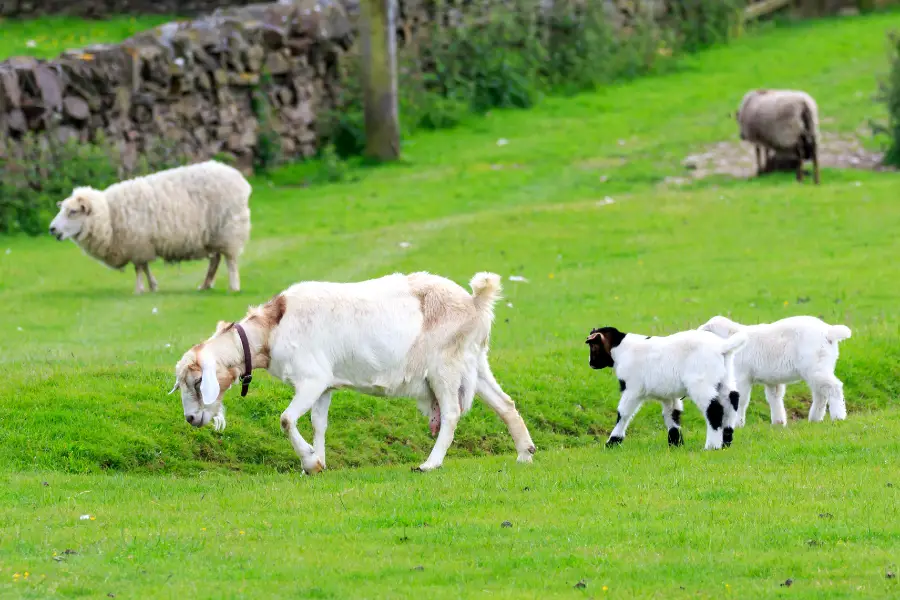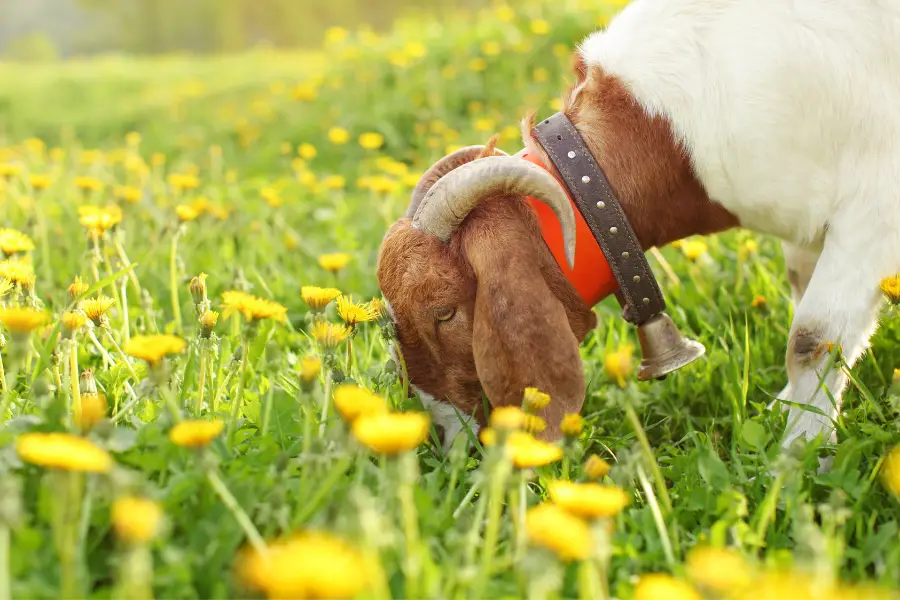
“How many Boer Goats can I raise on this much land” and “How much land do I need for this many Boer Goats” are two of the most common questions we hear.
Table of contents
How Many Boer Goats Per Acre?
Determining the number of Boer goats that can be raised per acre is a complex process that involves considering a variety of factors, including the quality of the pasture, the size of the goats, and the local climate and environment. In general, a reasonable initial stocking rate for Boer goats on pasture is about 3 to 4 goats per acre, depending on the quality of the pasture and the size of the goats. However, this is just a rough estimate, and the actual stocking rate will depend on the specific circumstances of your operation.
Note that Boer Goats are large, muscular animals and they require a lot of food compared to most other goats. The number of goats per acre will vary significantly between goat breeds.
Pasture Quality
One important factor to consider when determining the stocking rate for Boer goats is the availability of pasture and forage. If the pasture is of high quality and there is an ample supply of forage, it may be possible to sustain a higher density of goats. On the other hand, if the pasture is of poor quality or there is a limited supply of forage, it may be necessary to reduce the stocking rate in order to ensure that the goats have enough to eat.

Age And Size Of Your Boer Goats
In addition to the quality and availability of pasture and forage, the age and size of the goats can also affect the stocking rate. Larger goats will require more space and more forage than smaller goats, so it may be necessary to adjust the stocking rate accordingly. Similarly, younger goats may be more efficient at converting forage into body mass than older goats, so it may be possible to sustain a higher density of younger goats.
Reducing The Risk Of Parasites
Another factor to consider when determining the stocking rate for Boer goats is the risk of parasites, particularly stomach worms. These parasites can cause serious health problems in goats, and can be transmitted through contaminated pasture or feces. To reduce the risk of parasites, it is important to implement good herd management practices such as rotating pastures, deworming regularly, and keeping the environment clean. A lower stocking rate may also help to reduce the risk of parasites, as there will be less goats competing for the same resources and fewer opportunities for the parasites to spread.
When there is plenty of pasture, the goats will forage on plants that are off the ground, and these will grow back if there is a low enough load. Once the taller plants are consumed, the goats will then have to graze on grasses that are low to the ground. It is these low grasses where Haemonchus Contortus, the barber pole worm, is most likely to live. These stomach worms feed on the blood of your goats, causing anemia and potentially death.
Rotating the fields where your goats graze as often as possible reduces the risk of worm infections by giving the plants time to regrow. If you have enough land, you can rotate your goats every day. It is the risk of parasites that makes rotating the graze areas so important for goats. With cattle, pasture rotation is to ensure that there is enough food for the animals. With goats, this is not the case.
Local Advice
Despite these considerations, it can be challenging to determine the exact stocking rate for Boer goats, as there are many variables at play. That’s why it is always a good idea to consult with a local extension agent or a livestock specialist to get more specific guidance on stocking rates for your particular situation. They can help you to determine the appropriate stocking rate based on the specific conditions of your operation, and can provide you with valuable advice on how to manage your goat herd for optimal health and productivity.
Other Factors
In addition to the factors mentioned above, there are several other things to consider when raising Boer goats on pasture. These include the climate and environment, the availability of water and shelter, and the overall health and condition of the goats. By taking all of these factors into account, you can help to ensure that your goats are well cared for and able to thrive in their new environment.
Video: How Many Boer Goats Per Acre
In this video, Daniel from Arms Family Homestead addresses the question of how many goats you can raise per acre (stocking rate). Daniel wisely avoids giving a direct answer, and does a great job of covering many of the factors that you need to take into account for your own herd.
Conclusion
In conclusion, the number of Boer goats that can be raised per acre will depend on a variety of factors, including the quality of the pasture, the size of the goats, and the local climate and environment. It is always a good idea to consult with a local extension agent or a livestock specialist to get more specific guidance on stocking rates for your particular situation. By considering the factors mentioned above and implementing good herd management practices, you can help to ensure the health and productivity of your Boer goat herd.




